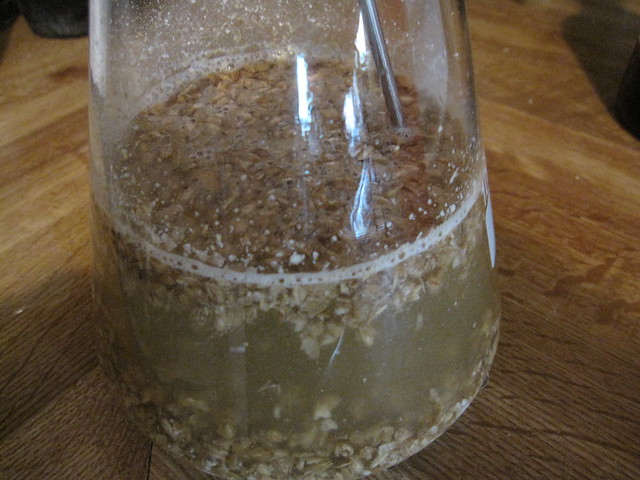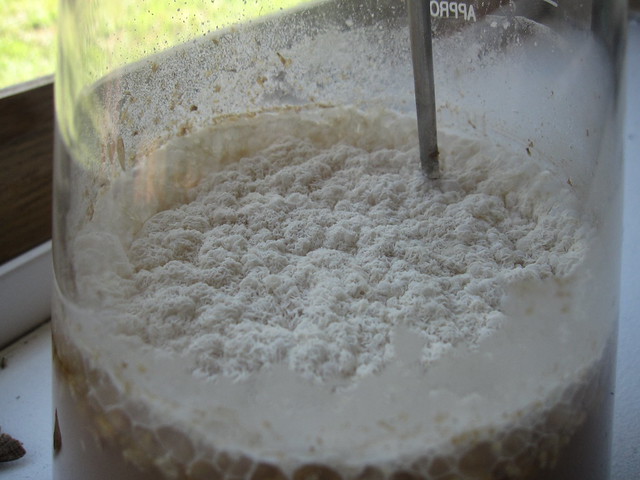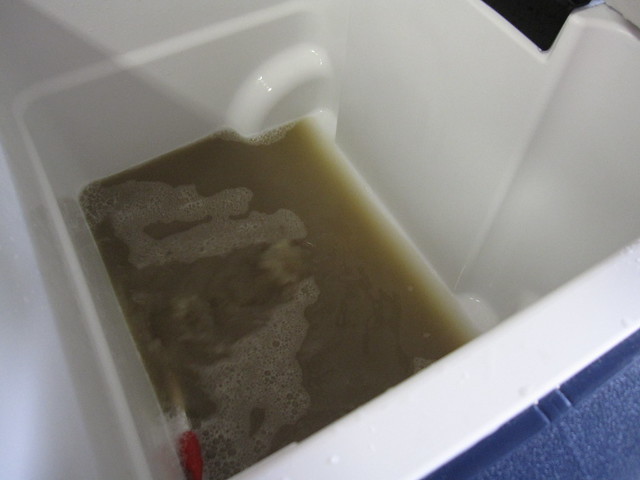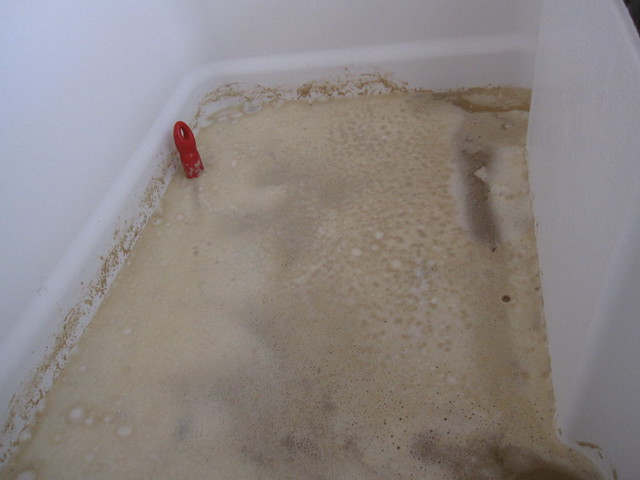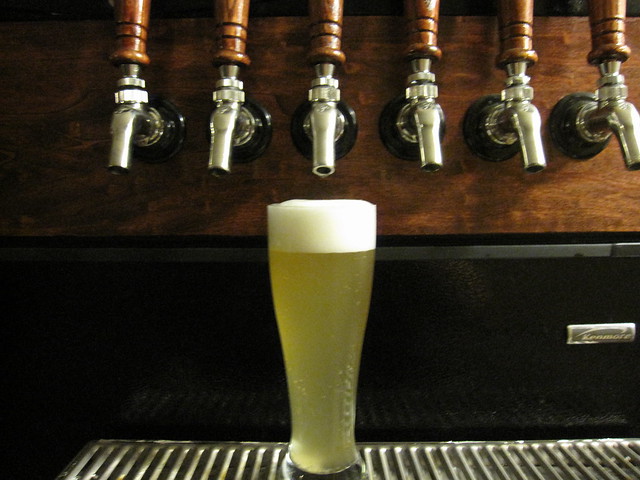"Lacto Two Ways"
One of my next brews will be a gose. This is my first foray into sour brewing, so in full disclaimer: I have no idea what I'm doing :fro: . Instead of purchasing a lactobacillus culture from Wyeast or White Labs, I'm going to try culturing some from another source. The two sources that I'll be trying to culture from are commercially-made yogurt, and unmashed acidulated malt.
In biology labs, a common method for keeping cultures at optimal temperature is to place them in a water bath held at optimal growth temperature. This equipment is what I will try to replicate with a slow cooker and temperature controller.
Equipment:

First, I configured the temperature controller to cycle the power on the slow cooker. I'm sure there are tutorials on how to do this on these forums. The temperature probe is threaded in through a hole in the slow cooker lid. My slow cooker has a particular "feature" where one can use different-sized vessels for the bowl, but requires you to press a button to select bowl size each time the unit is powered on. The "fix" for this was to place a heavy jar in front of the unit (the chocolate sauce, in the picture) so that the appropriate button is held down. After filling the bowl with warm water and powering-on the unit, the slow cooker took about 20 minutes to reach an optimal temperature of 120F. My cheap temperature controller appeared to hold it within 1 or 2 degrees, which is good enough for our purposes.
Next, I filled each of the jelly jars with 250mL of water and 25g DME. After covering them with plastic wrap, they spent 15 minutes boiling in the microwave. The starters were cooled in a cold water bath, then allowed to rest in the 120F slow-cooker bath for a few minutes.
Now to begin culturing! After carefully opening the yogurt cup, I used a sanitized spoon to scrape off the whey-rich liquid at the top. This was then stirred into one of the starters, and the starter covered and the plastic wrap secured with a rubber band. After re-washing and re-sanitizing the spoon, I then took a scant spoonful of the acidulated malt and stirred it into the other starter. Again, covered and secured. These were then left to sit in the water bath overnight.
The results so far:


The first picture is the Yogurt culture: there's a small layer of tan stuff at the bottom (bacteria?) but no pellicle. The second image is the malt culture: there's a slightly-thicker layer of tan stuff at the bottom, and some small chunks of grain, but no pellicle. Unfortunately, I didn't have an opportunity to taste either this morning.
I'm going to keep the jars in the bath for a while longer, to see if more growth occurs or if a pellicle forms.
Helpful tips, comments, or questions are appreciated!
One of my next brews will be a gose. This is my first foray into sour brewing, so in full disclaimer: I have no idea what I'm doing :fro: . Instead of purchasing a lactobacillus culture from Wyeast or White Labs, I'm going to try culturing some from another source. The two sources that I'll be trying to culture from are commercially-made yogurt, and unmashed acidulated malt.
In biology labs, a common method for keeping cultures at optimal temperature is to place them in a water bath held at optimal growth temperature. This equipment is what I will try to replicate with a slow cooker and temperature controller.
Equipment:
- One jar, Chobani brand yogurt.
- Acidulated Malt (I think it's from Briess?)
- Two washed & sanitized jelly jars.
- Slow cooker or Crock-Pot with deep interior. Mine is Hamilton Beach brand.
- Temperature controller and Solid-State Relay (SSR).
- Spoon.
- Dry Malt Extract.
- Plastic Wrap & Rubberbands.
- Sanitizer (I use StarSan).

First, I configured the temperature controller to cycle the power on the slow cooker. I'm sure there are tutorials on how to do this on these forums. The temperature probe is threaded in through a hole in the slow cooker lid. My slow cooker has a particular "feature" where one can use different-sized vessels for the bowl, but requires you to press a button to select bowl size each time the unit is powered on. The "fix" for this was to place a heavy jar in front of the unit (the chocolate sauce, in the picture) so that the appropriate button is held down. After filling the bowl with warm water and powering-on the unit, the slow cooker took about 20 minutes to reach an optimal temperature of 120F. My cheap temperature controller appeared to hold it within 1 or 2 degrees, which is good enough for our purposes.
Next, I filled each of the jelly jars with 250mL of water and 25g DME. After covering them with plastic wrap, they spent 15 minutes boiling in the microwave. The starters were cooled in a cold water bath, then allowed to rest in the 120F slow-cooker bath for a few minutes.
Now to begin culturing! After carefully opening the yogurt cup, I used a sanitized spoon to scrape off the whey-rich liquid at the top. This was then stirred into one of the starters, and the starter covered and the plastic wrap secured with a rubber band. After re-washing and re-sanitizing the spoon, I then took a scant spoonful of the acidulated malt and stirred it into the other starter. Again, covered and secured. These were then left to sit in the water bath overnight.
The results so far:


The first picture is the Yogurt culture: there's a small layer of tan stuff at the bottom (bacteria?) but no pellicle. The second image is the malt culture: there's a slightly-thicker layer of tan stuff at the bottom, and some small chunks of grain, but no pellicle. Unfortunately, I didn't have an opportunity to taste either this morning.
I'm going to keep the jars in the bath for a while longer, to see if more growth occurs or if a pellicle forms.
Helpful tips, comments, or questions are appreciated!












![Craft A Brew - Safale BE-256 Yeast - Fermentis - Belgian Ale Dry Yeast - For Belgian & Strong Ales - Ingredients for Home Brewing - Beer Making Supplies - [3 Pack]](https://m.media-amazon.com/images/I/51bcKEwQmWL._SL500_.jpg)













































